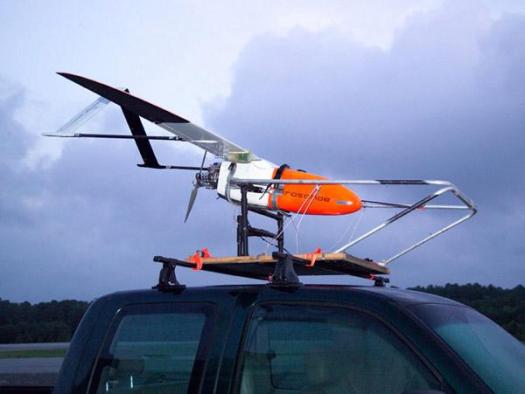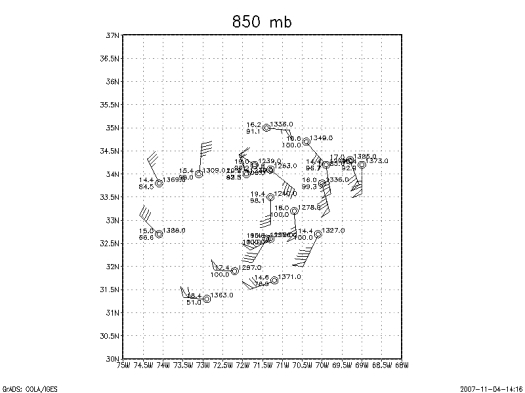
On November 2, 2007, an unmanned aerial vehicle (UAV) Aerosonde flew into Tropical Storm Noel. This marks the first time a UAV flew into an Atlantic tropical cyclone while encountering hurricane-force winds.
The flying probe was produced by the Australian-based Aerosonde Pty Ltd. (now Textron Systems) which had been manufacturing sensors since 1995. It reached an agreement with NOAA and NASA to deploy several of its UAVs in conjunction with AOML/HRD’s annual hurricane field program. The first deployment was in 2005 into Tropical Storm Ophelia as it was transitioning into an extratropical cyclone.

(NOAA/NASA)
The 2007 deployment was done in conjunction with NOAA43 that was flying into Noel to offer simultaneous inter-comparison data with the Aerosonde. The probe was launched from NASA’s Wallops Island facility at 2 PM while the NOAA plane left MacDill AFB at 8 PM. The two vehicles collected information from different levels with the Aerosonde getting as close as 300 feet to the surface. Although Noel had been downgraded to a tropical storm by NHC, the UAS encountered 80 knots (40 m/s) of wind during its flight. It returned to its base by 9:30 PM and NOAA43 reached MacDill by 5 AM the next morning.
Referencias
Dorst, N. M., “The National Hurricane Research Project”, (2007), BAMS, (v.88, n.10), pp. 1566-158